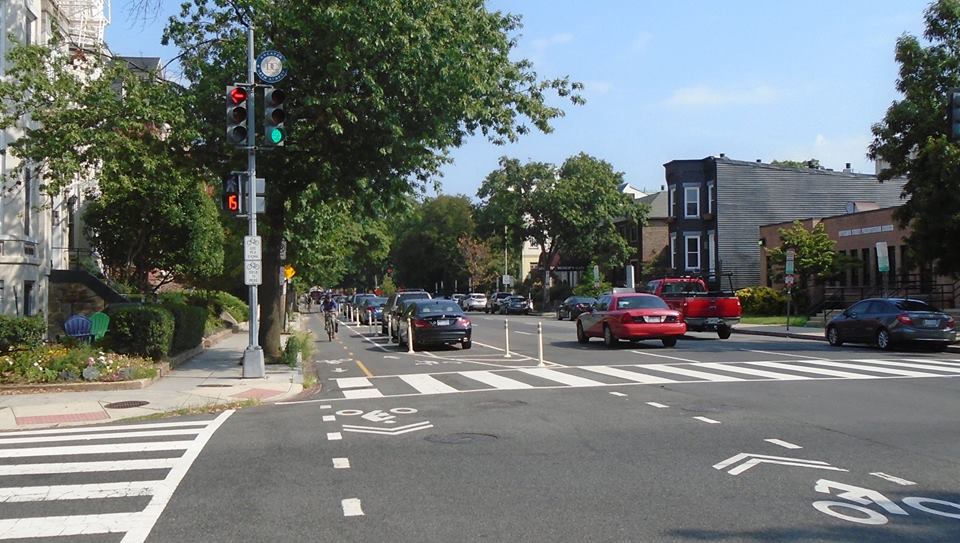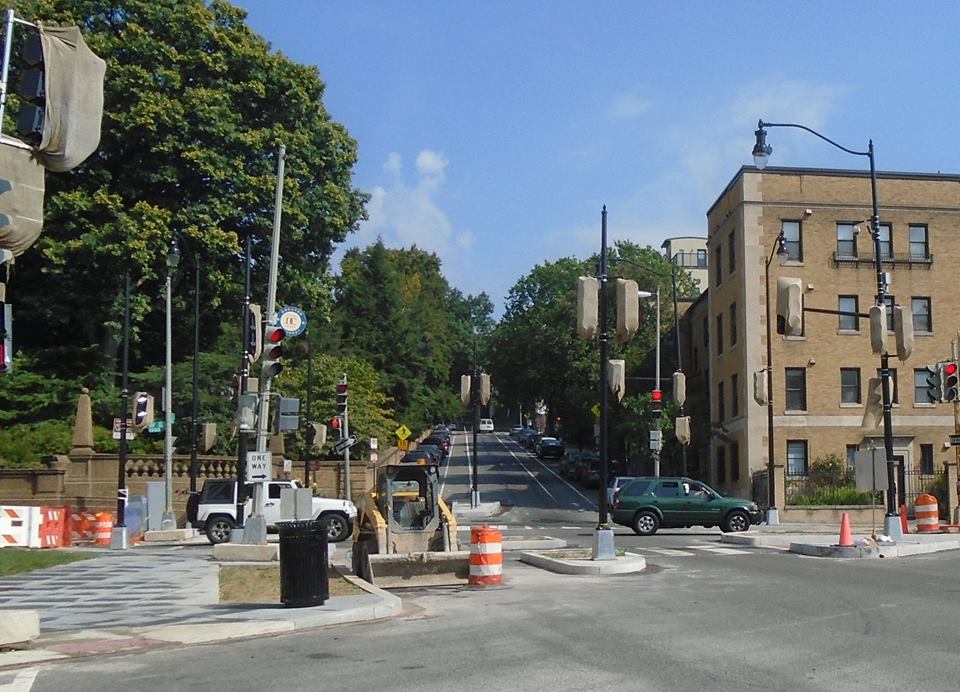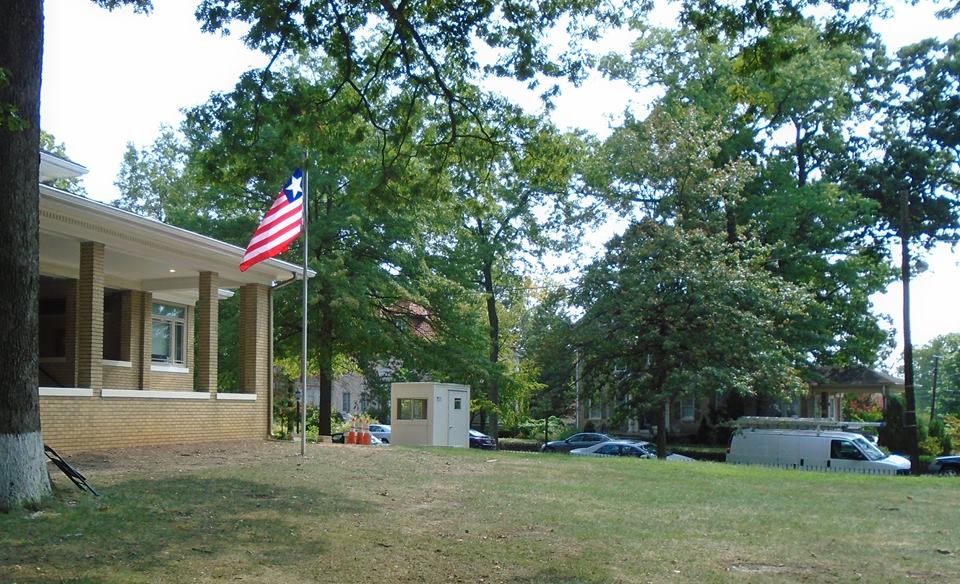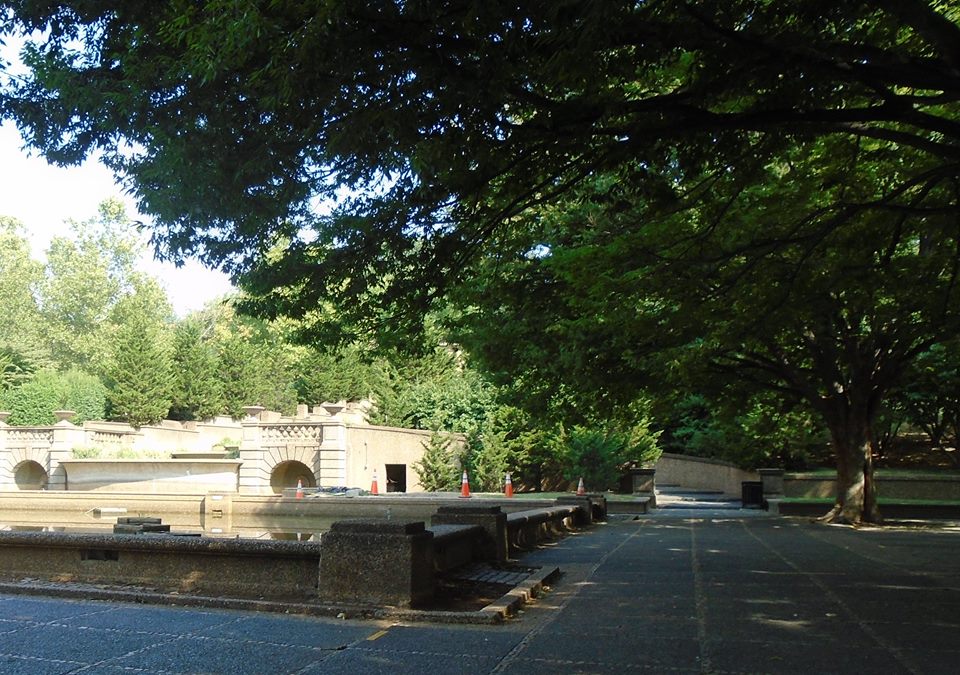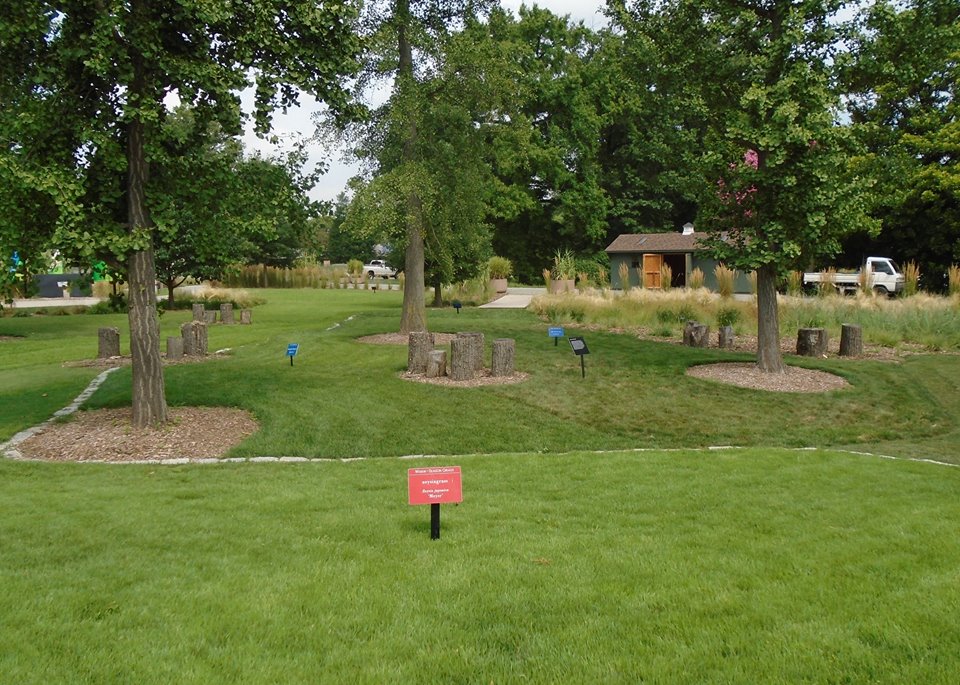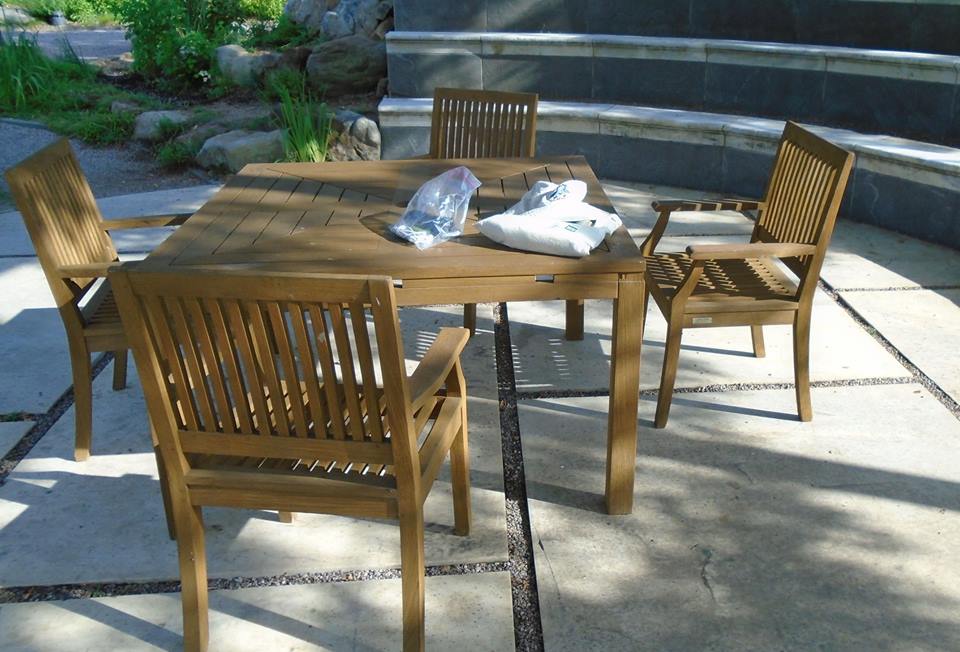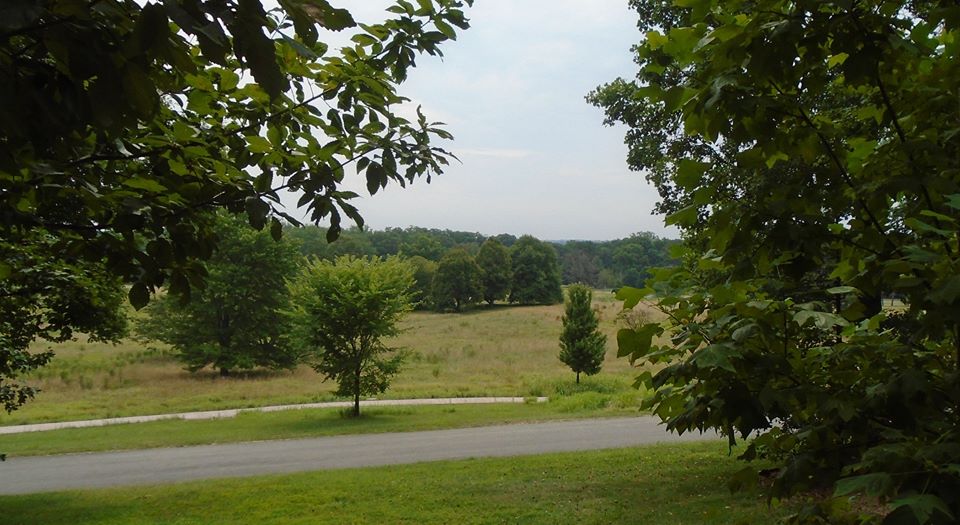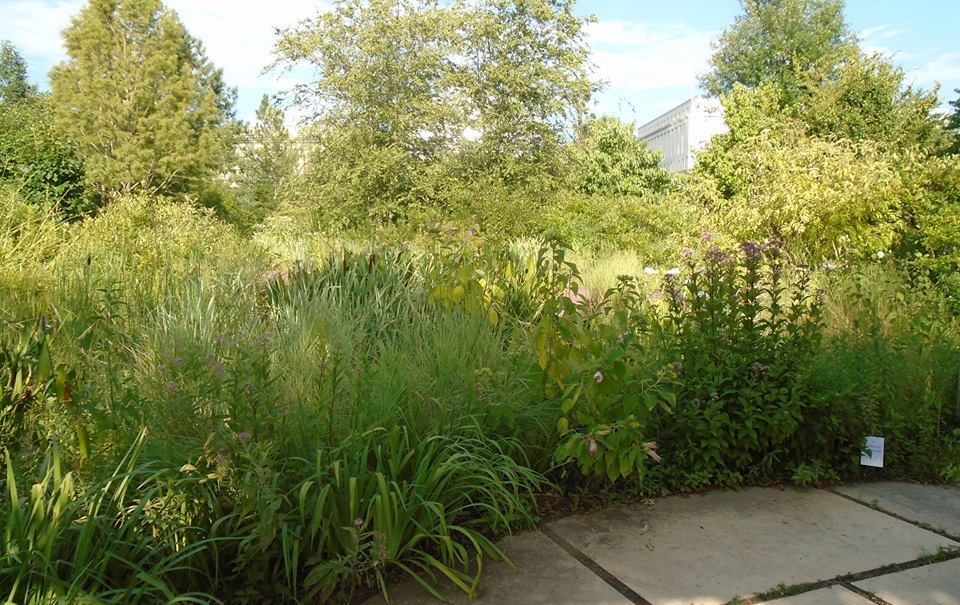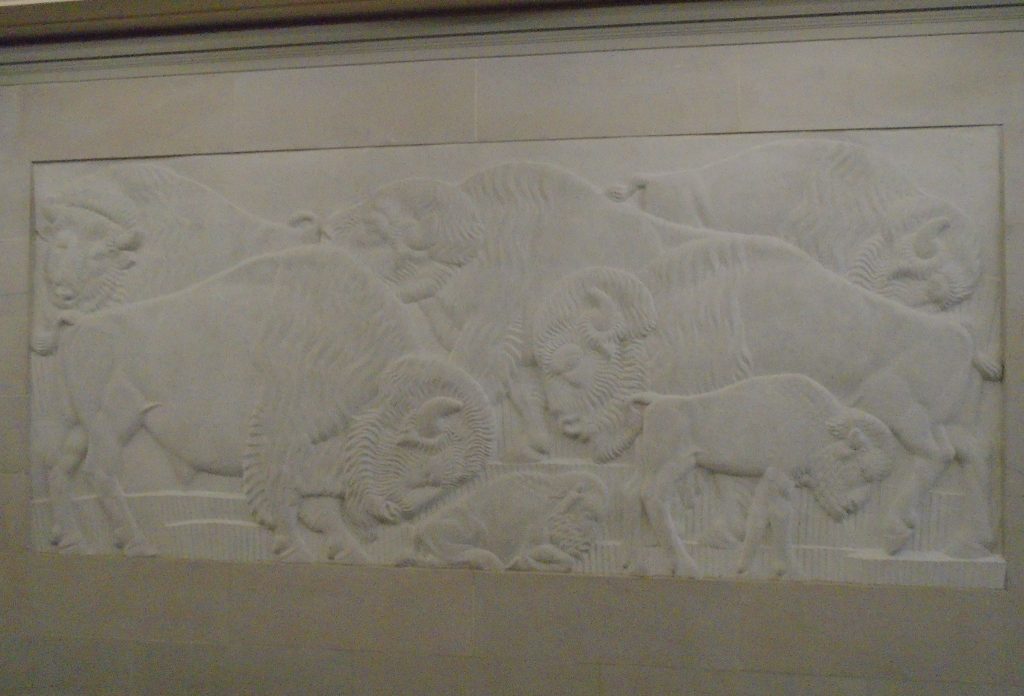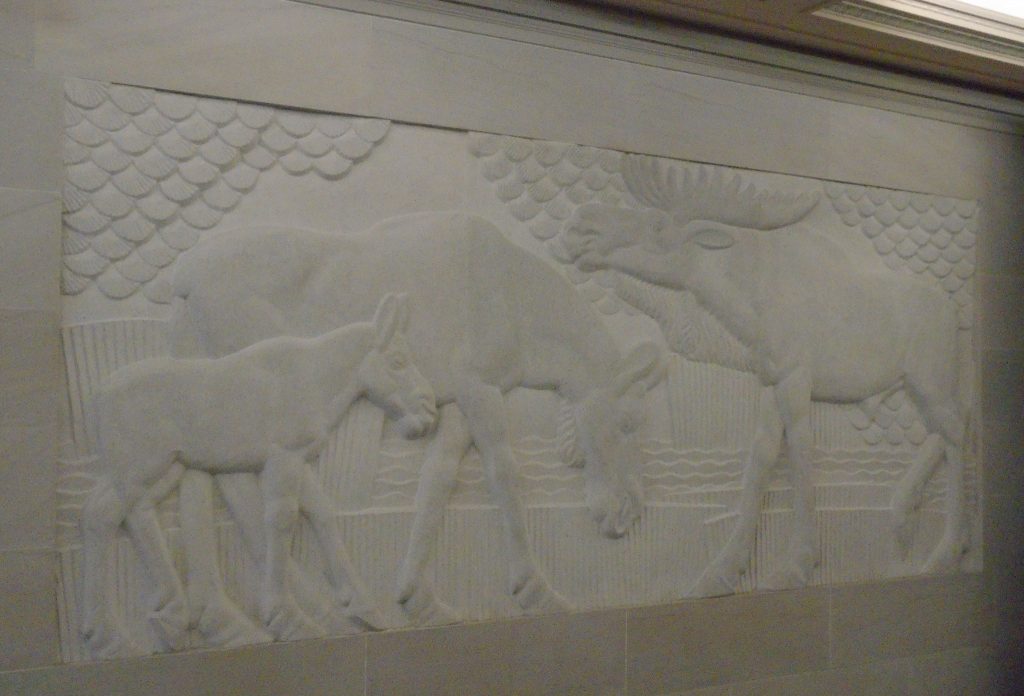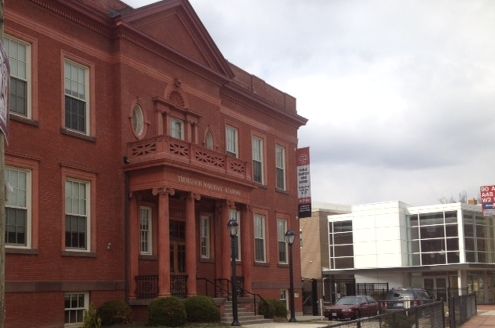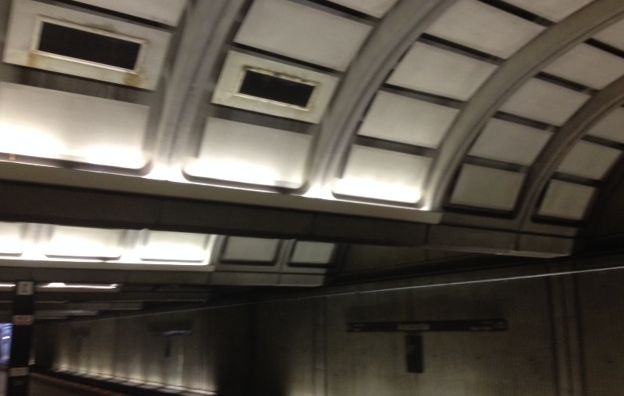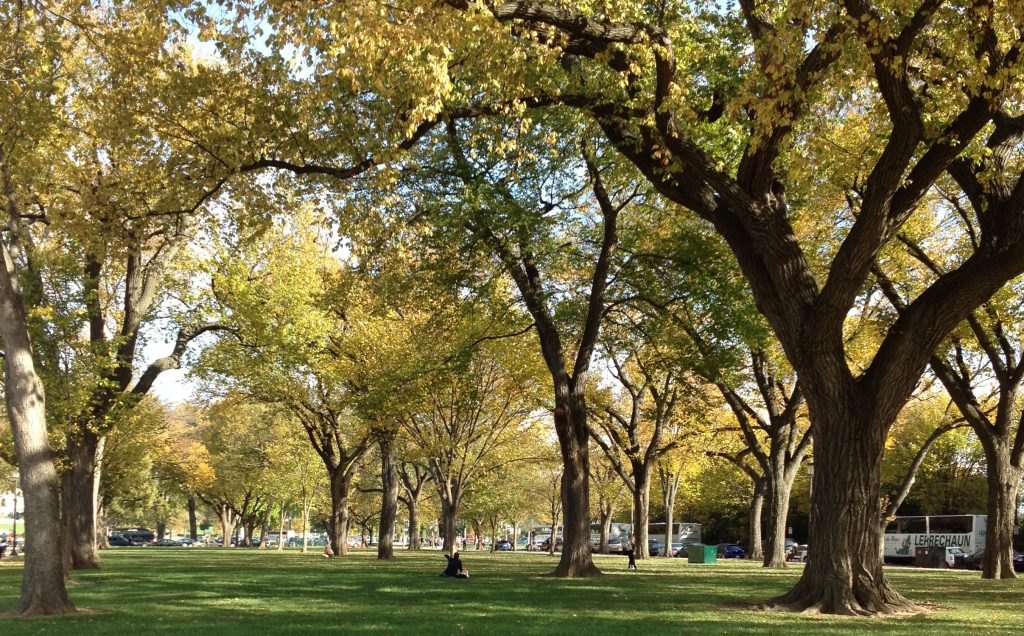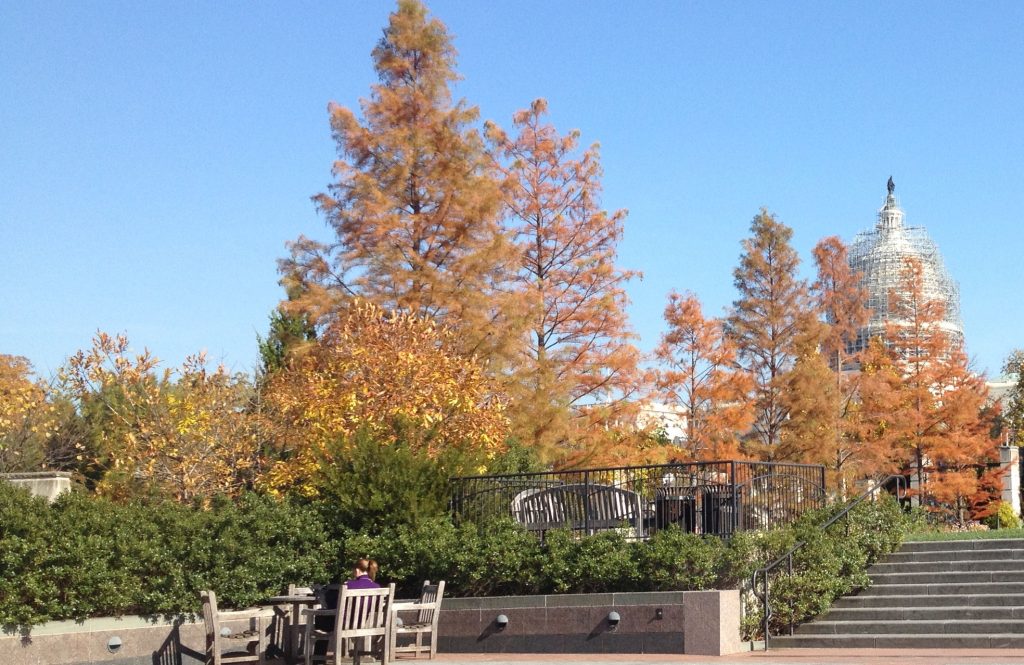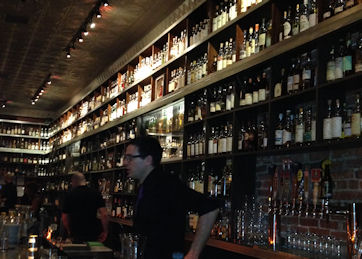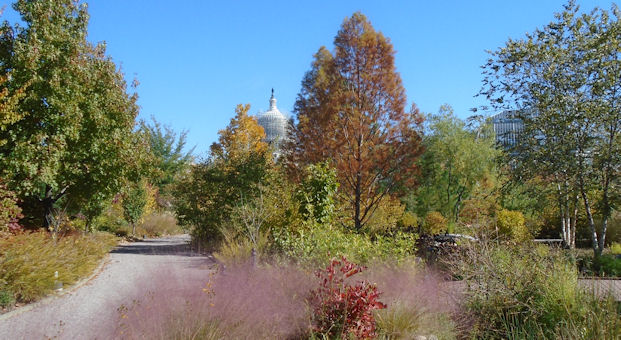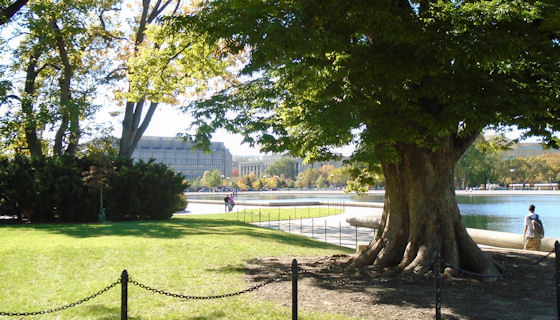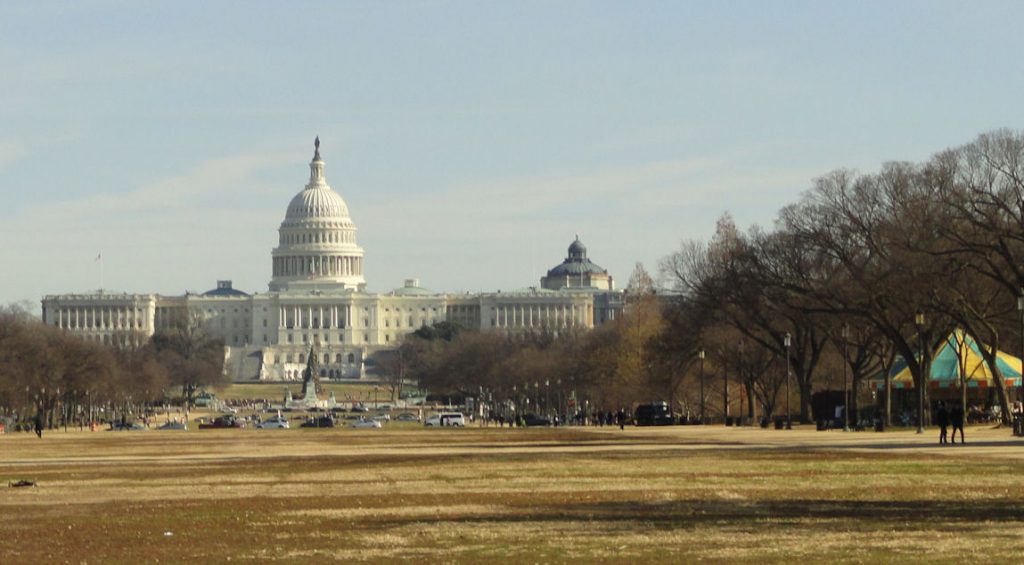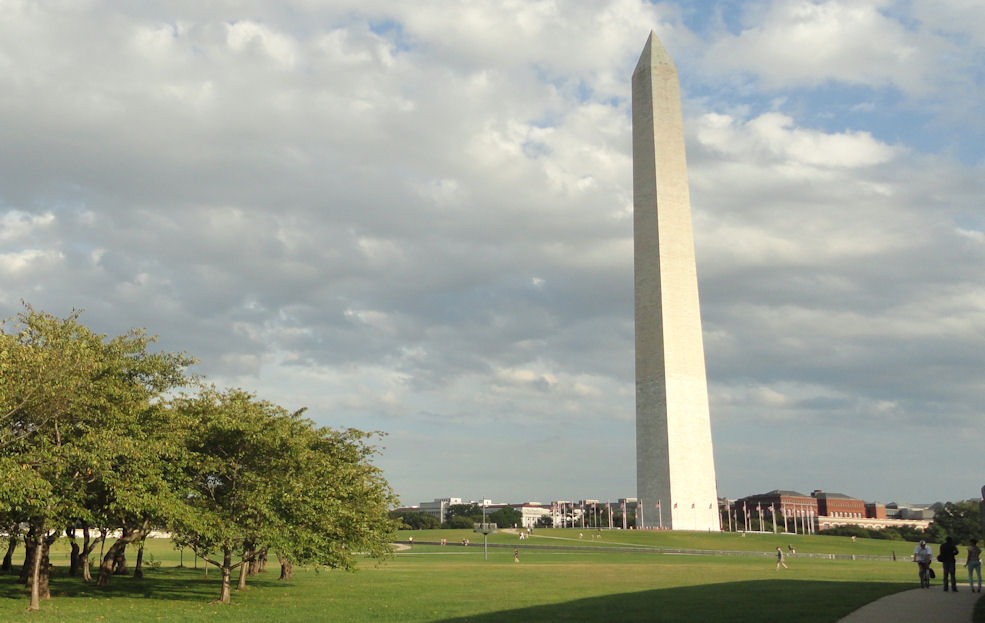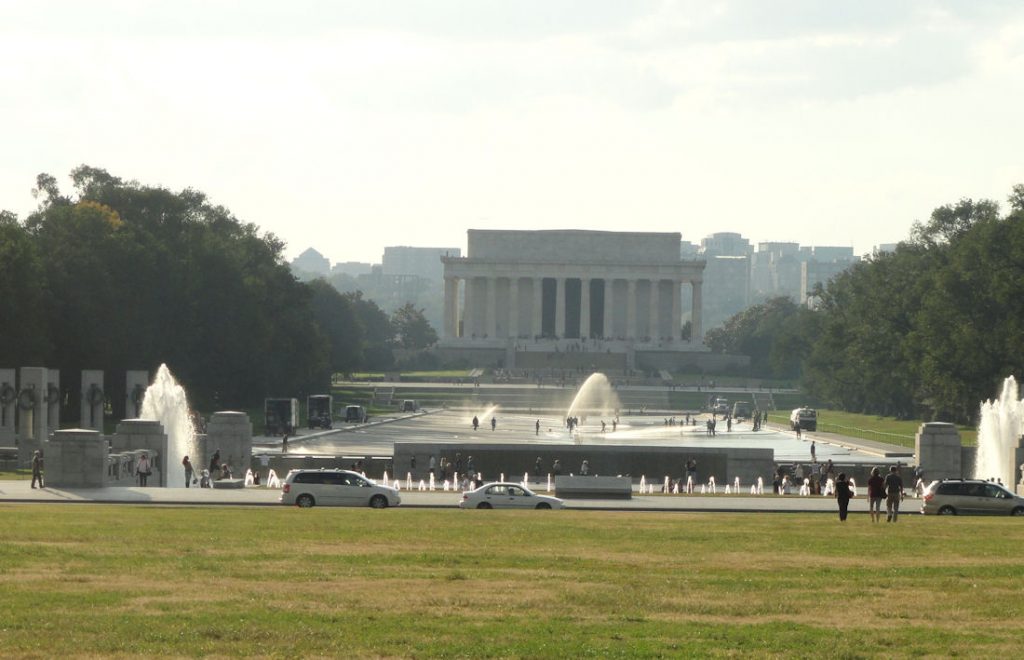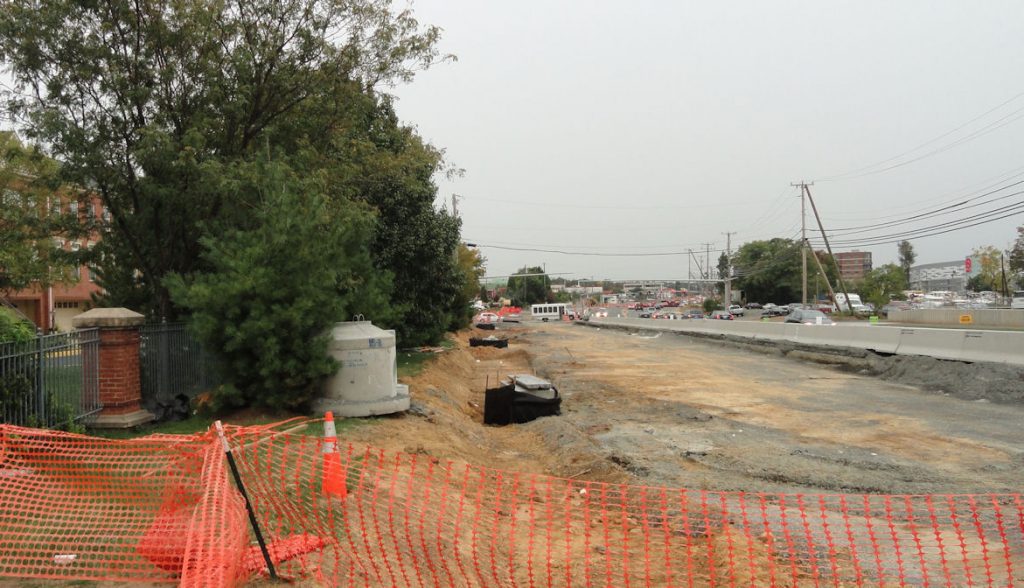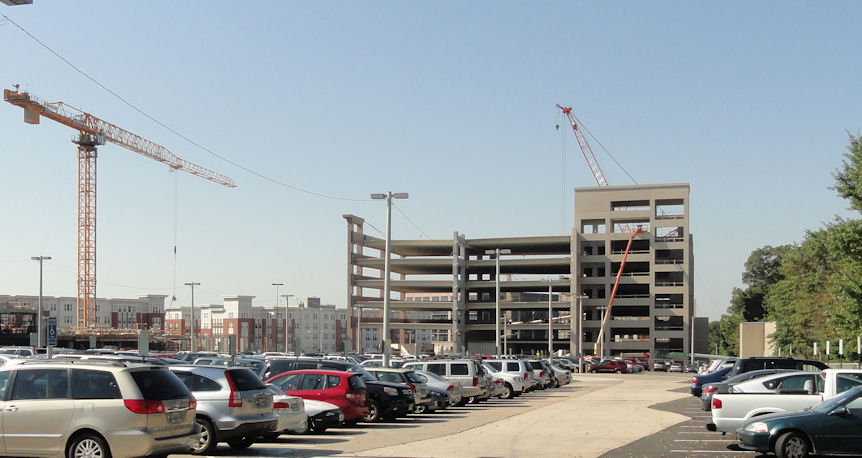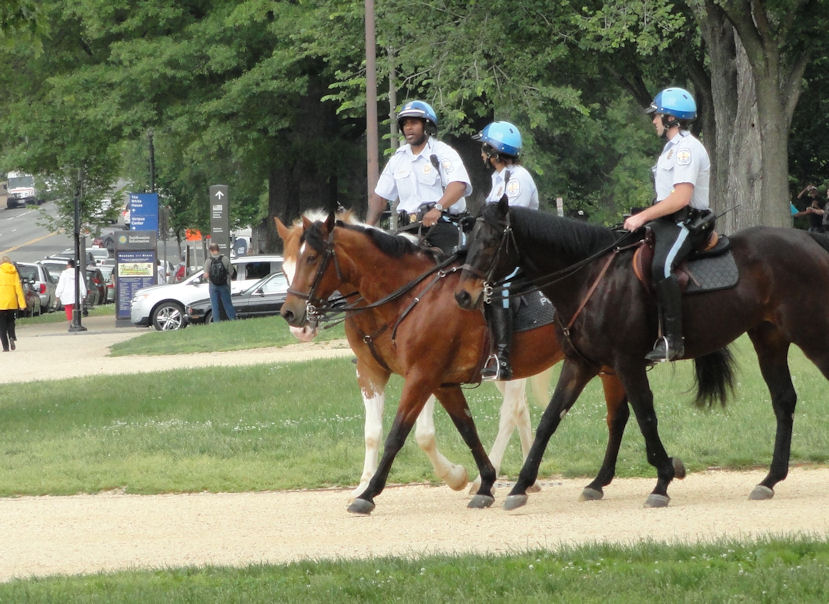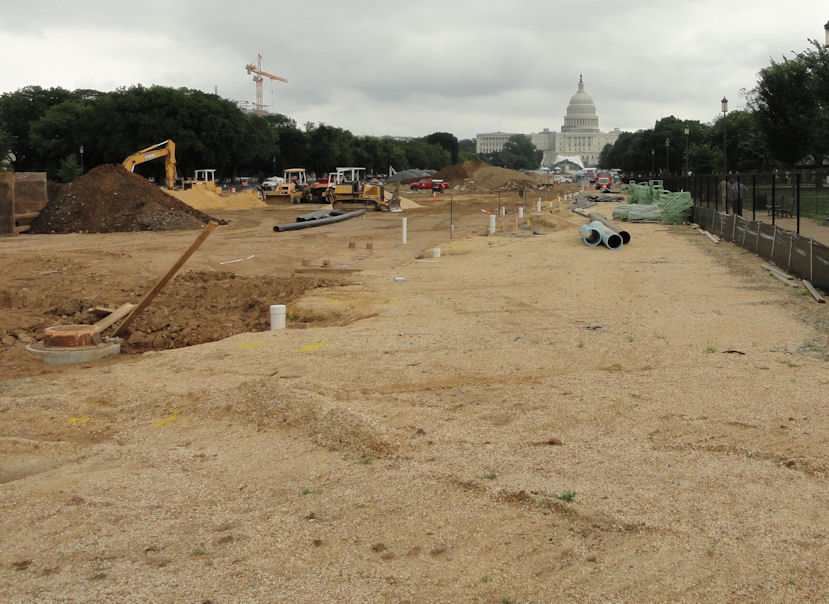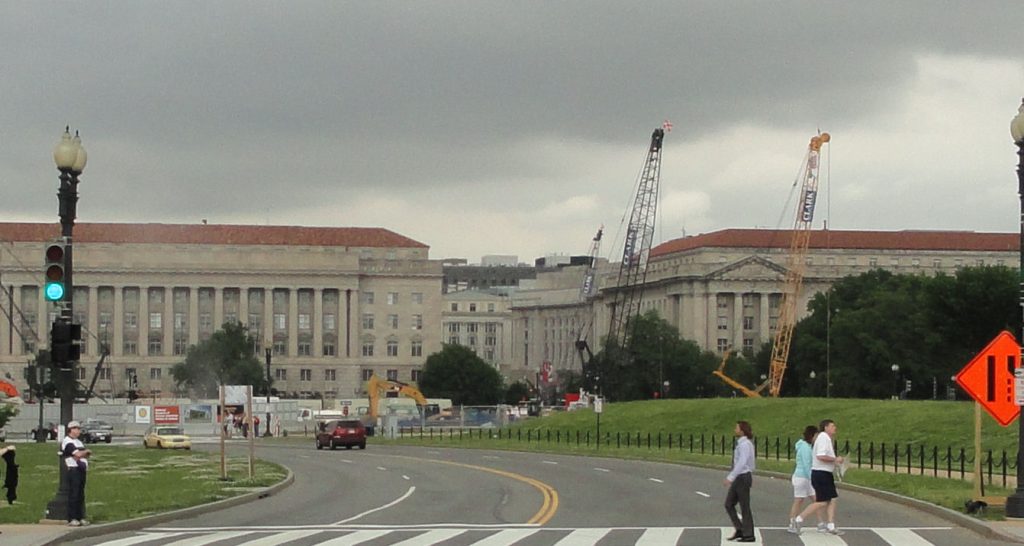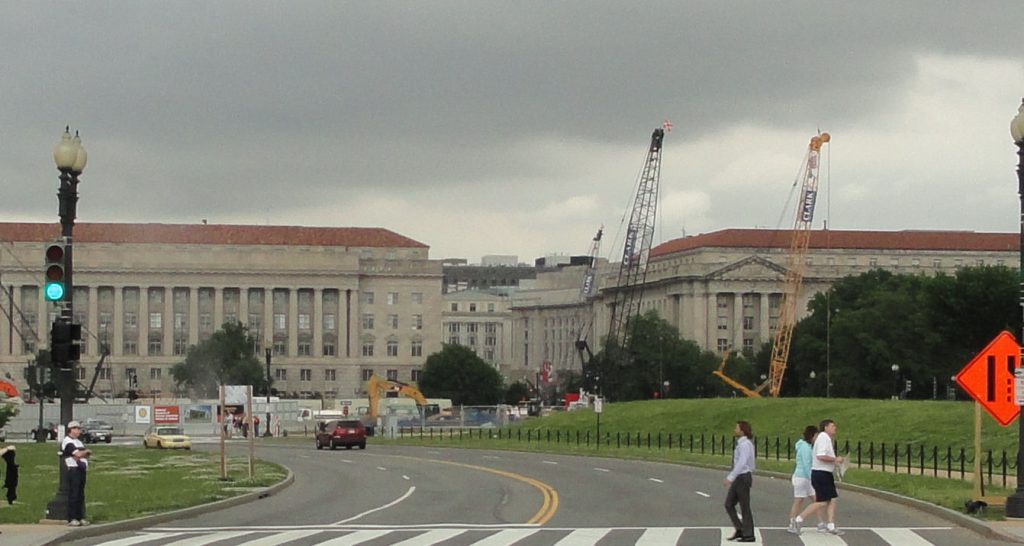Went up to Capitol Hill to meet with staffers for Virginia’s Senators and Members of Congress. We met Republicans and Democrats, all of whom were broadly supportive of tree farming and the principles of sustainable forestry. It is an easy sell because we are representing fundamentally good practices and the great idea of sustainability.
Lobbying
It was interesting to make this foray into lobbying. I was teamed for all appointments with Paul Howe, who represents Virginia Forestry Association and on some also with Benita Ring, Virginia State Forester. Since I was “the Virginia landowner” I got to do much of the talking. Paul stepped in with details of actual legislation and Bettina talked about important concerns such as funding to fight wildfire and landscape wide programs.
The American Forest Foundation gave me a list of what they considered priorities for landowners. I could choose which ones to emphasize and how to do it. I could also add in concerns that I thought important, which I did when I started off by talking about our new Virginia Tree Farm Foundation, launched last week. My biggest challenge was repeating essentially the same short presentation five times in the same day. I did vary it a little in to go with what I perceived as the concerns of the audiences, but I tried hard not to just change it to make it more interesting for me. I didn’t speak from a written test, but had top-line sentences written in my little green book. I will elaborate a little here to describe what I said and add a little of what I recall from what Paul and Bettina said, but I don’t claim that I will be doing justice to their complete positions.
After the usual introductions, I started each presentation with a discussion of the new Virginia Tree Farm Foundation. We went over basic facts and promised to send along more detailed information. I am paraphrasing below.
The spiel
We have come to talk about sustainable forestry in Virginia and specifically about the Virginia Tree Farm System. The American Tree Farm System (ATFS) was founded in 1941. The first twelve Virginia tree farms were certified in 1947. Virginia tree farmers have been growing wood sustainably ever since. Today there is more timber growing in Virginia than there was in 1947 and we can continue doing this. Virginia today have 1304 tree farmers. We recently reduced the total number as we cleaned up our lists. We intend to increase the numbers again.
The new Tree Farm Foundation
Let me start off with some news. We have formed a new Virginia Forestry Foundation, a 501 (c) (3) corporation to encompass the Virginia Tree Farm Committee and do more. I cannot fill out too many details now, since we just did it last week and still have to work out exactly how it will work. We envision the Foundation to raise money and determine policy for tree farm, but also as a network organization that will bring together tree farmers and various stakeholders such loggers, mill workers and hunters, as well as young people who we want to help understand the nature of sustainable forestry. We would like to invite Senator/Representative to take advantage of our network for information and contacts.
We would talk about this depending on the questions asked and then move on.
Certification for forest land
As I said, Tree Farm was America’s and I think the world’s first system of forest certification, but it is not the only one. In the 1990s others were created, including the Forest Stewardship Council (FCS) and the Sustainable Forestry Initiative (SFI). I have studied forest certification and have concluded that their on-the-ground effects are very similar. They all are good. FCS is more of an international organization and it is appropriate in places like Papua or Indonesia, since it includes provisions for protections of indigenous rights. SFI is more common in North America. Tree Farm is certified with FSI and I am morally certain that we are doing a good job in protecting our habitats, water, soil and ecological diversity.
Including all certification, not just FSC
Last year, the EPA recommended that government purchase certified timber and specified only FSC wood. We think this is absurd. More than 70 percent of all certified forests in the United States are certified under the SFI or ATFS. This means the wood products that come from most certified, sustainable forests in the U.S.-including most Virginia forests are not included.
I would ask that the Senator or Representative consider this and address this with EPA. All agreed.
Timber Innovations Act
Next we talked about the Timber Innovation Act. This would provide research into improving and using timber products, especially innovative new products such as cross laminated timber. I told them what I believe, that this is as near a perfect bill as anyone could conceive. It has no aspects of compulsion. We do not advocate that anyone be forced to use wood. Wood will not replace steel or concrete, but it has many advantages and this would create options. I explained that new techniques and sustainability concerns make timber the material of the future. It costs 10-15% less to construct a building out of cross laminated timber compared with a glass and steel building. Beyond that, they can be 30-50% faster to build. They require fewer deliveries and it is much easier for plumbers and electricians to make cuts to install their pipes and wires. A wood building also weighs less, so it requires less of a foundation and can be built on some sites unavailable to heavier structures. There is more. Wood is the most benign building material from a total lifecycle ecological perspective.
We would discuss this depending on the questions from our interlocutors. Everyone was interested and supportive.
At this point, I was mostly done. I shared some photos of my tree farms and invited everyone to ask for more information and contacts.
Bettina would then talk about stewardship programs and wildfires. Wildfires are much in the news. We need to address the problem. Currently more than half of the U.S. forestry budget can go to fighting fires. This takes money from other worthy programs, including doing things that can prevent fires in the future. A better organized system would improve results.
At this point we were mostly done, at least we had exhausted the attention span of our hosts, so we would finish. Tonight, and tomorrow I have the tedious but immensely important task of writing up thank you cards and follow-up emails.
We have made the breakthrough and now we need to finish the job. I was pleased with the interim results. I enjoy this sort of thing. It is a lot like my old work in the Foreign Service. I have real passion for the forestry. I think that this helps my credibility that I am a true believer and I am living what I believe.






